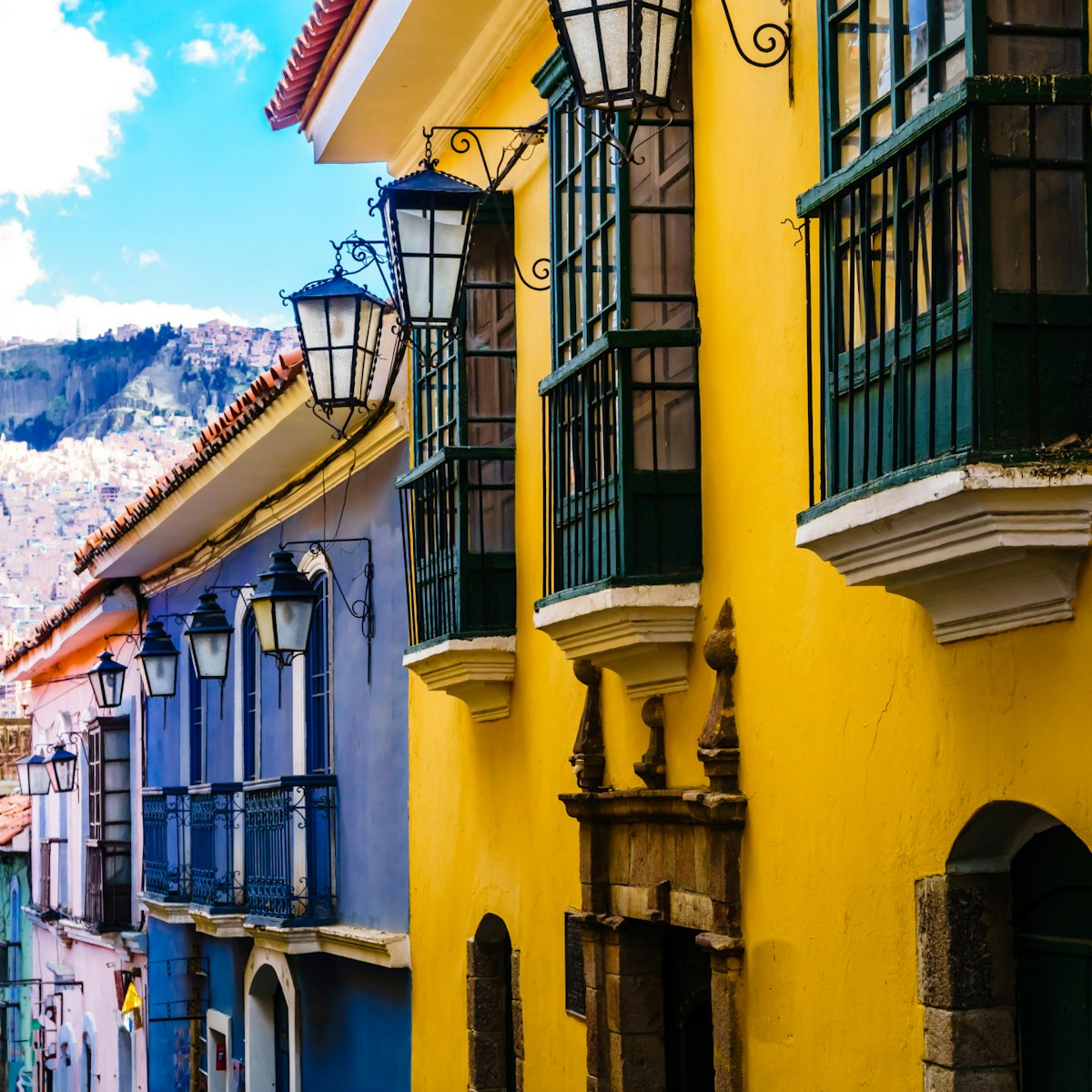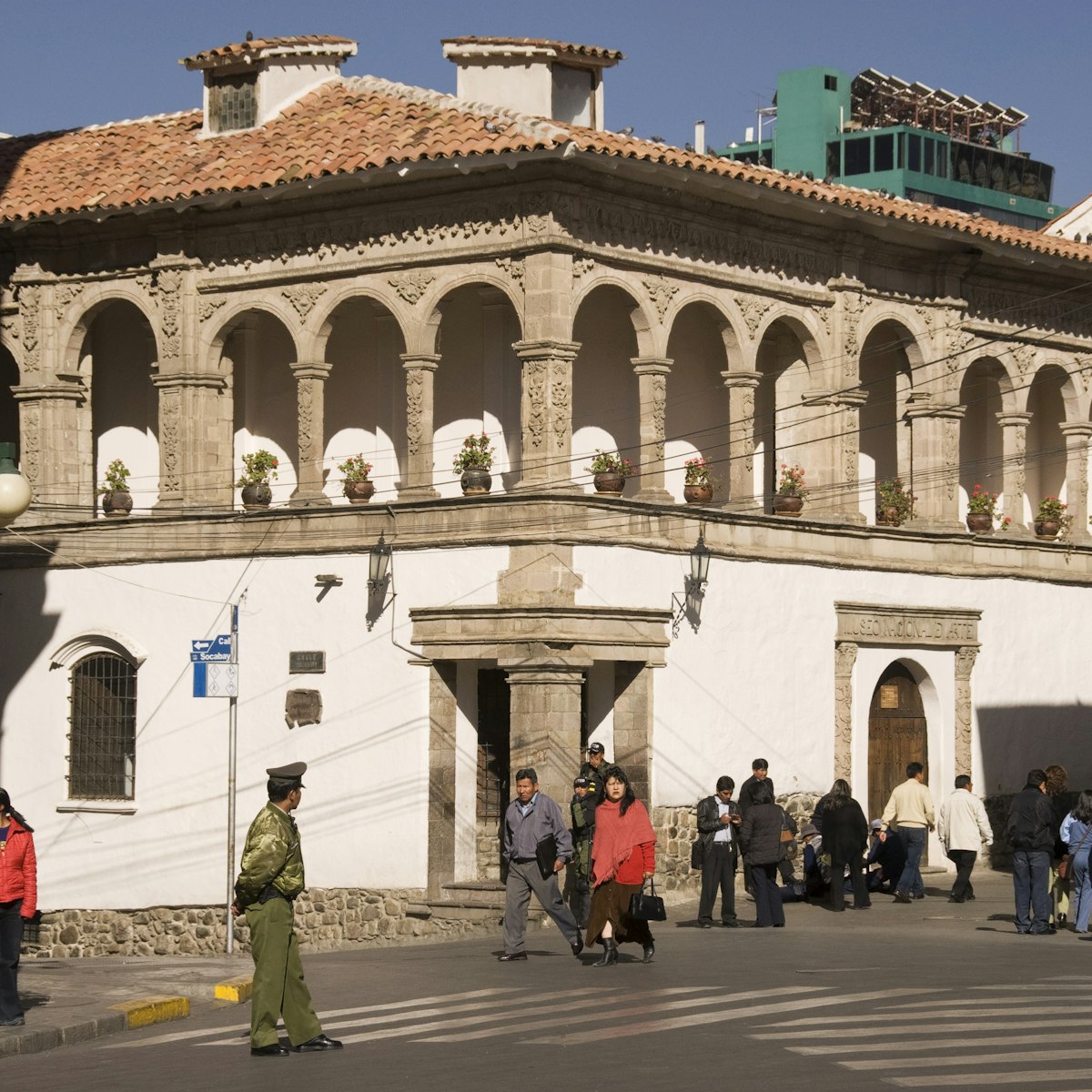The hewed stone basilica of San Francisco was founded in 1548 by Fray Francisco de los Ángeles. The original structure collapsed under heavy snowfall around 1610, but it was rebuilt between 1743 and 1772. The second building is made of stone quarried at nearby Viacha. The facade is decorated with carvings of natural themes such as chirimoyas (custard apples), pine cones and tropical birds.
The mass of rock pillars and stone faces in the upper portion of Plaza San Francisco is intended to represent Bolivia’s three great cultures – Tiwanaku, Inca and modern (Aymará).
The cloisters and garden of Museo San Francisco, adjacent to the basilica, beautifully revive the history and art of the city’s landmark. There are heavenly religious paintings, historical artifacts, an interesting anteroom and a God-like, if quirky, view from the roof.
As one of the city’s focal points, the plaza is often the staging ground for rallies and protests.







